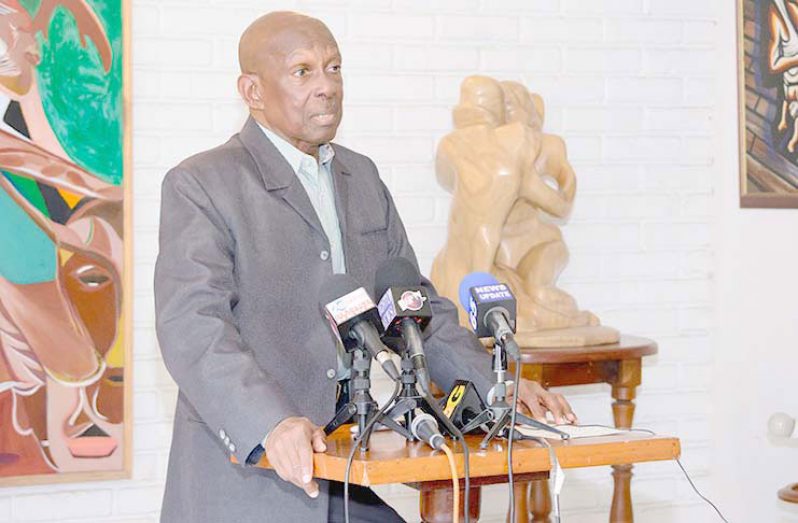THE Caribbean Community (CARICOM) has come a far way since the signing of the Treaty of Chaguaramas in 1973, with notable achievements along the way. However, there is much room for improvement and a clear need for the younger generation to better understand the value of cooperation within the Region for a sturdier CARICOM.
This was the position of former Prime Minister and Mayor of Georgetown, Hamilton Green and Director of the Foreign Service Institute, former Ambassador, Ronald Austin, who appeared as guests on an online programme of the APNU+AFC on Sunday.
Today, Member States observe CARICOM Day, 47 years after the signing of the Treaty.
Former Mayor of Georgetown, Hamilton Green, said that while CARICOM has had its fair share of challenges, to date, it has moved forward with commendable strides. However, he said that there are still numerous areas in which Member States can collaborate to ensure that the Region grows as a collective and is recognized internationally.

“Today, I believe the imperative is for the Members of CARICOM, those who first formed the West Indian Federation, to recognise, that, in today’s environment, it is an imperative that small countries such as those that comprise CARICOM, recognise the absolute necessity to work together, to harmonise their programmes, so that we can effectively be part of a fast-growing technological world,” he advised.
Greene said that it is equally important that when CARICOM leaders meet to make decisions, that these decisions are implemented without reservation. “We are good at talking sometimes but it is important for us to act and translate the rhetoric into reality,” he stressed.
In his interaction, Green provided a condensed history of what led up to the establishment of the Treaty of Chaguaramas and who were the main contributors. He also pointed out the many ways in which Guyana contributed to collaboration in the region, prior to, and after, the Treaty’s formation.
He highlighted the creation of the Caribbean Festival of Arts (CARIFESTA) in 1972 by President Linden Forbes Sampson Burnham, prior to 1973, as a means to showcase the talents of the West Indies and Caribbean to the world.
He also noted Burnham’s intention, in 1962, to work in collaboration with former United States (U.S) President, Lyndon Johnson, to bring West Indians from all over the world to support projects in Guyana which would open up the highway and expound the agriculture potential in the Essesquibo to ward off Venezuela’s claims. However, Green said that these plans fell through when President Johnson was voted out of office.
He said: “That, I think, is something that we need to remember as we talk about CARICOM.”
Meanwhile, Ambassador Austin noted that, after 1973, with the onset of the oil crisis, CARICOM hadn’t met for seven years between 1974 and 1981. He stated that it was at the 1982 Summit in Ocho Rios, Jamaica, that President Burnham proposed and received the support for annual meetings.
After the Ocho Rios Summit, and throughout the 1980s, he said that it was recognised that CARICOM was ‘losing steam’ but, through collaboration, this led to the launching of the West Indian Commission and the revised Treaty of Chaguaramas.
Ambassador Austin believes that it is unfortunate that many within the younger generation are unaware of this history but encouraged that they take up interest, as unity within the Region will remain relevant for years to come.
Specifically, to Guyana, he reminded that CARICOM has played an instrumental role in representing Guyana’s rights in the Guyana/Venezuela border controversy.
“It is vital for us to understand that, as far as Guyana is concerned, strategically and otherwise, CARICOM is our first line of defence,” he said. “Having worked with CARICOM for quite a few years [I can speak to] the importance and the necessity of CARICOM politically, economically and socially for Guyana.”



.jpg)









